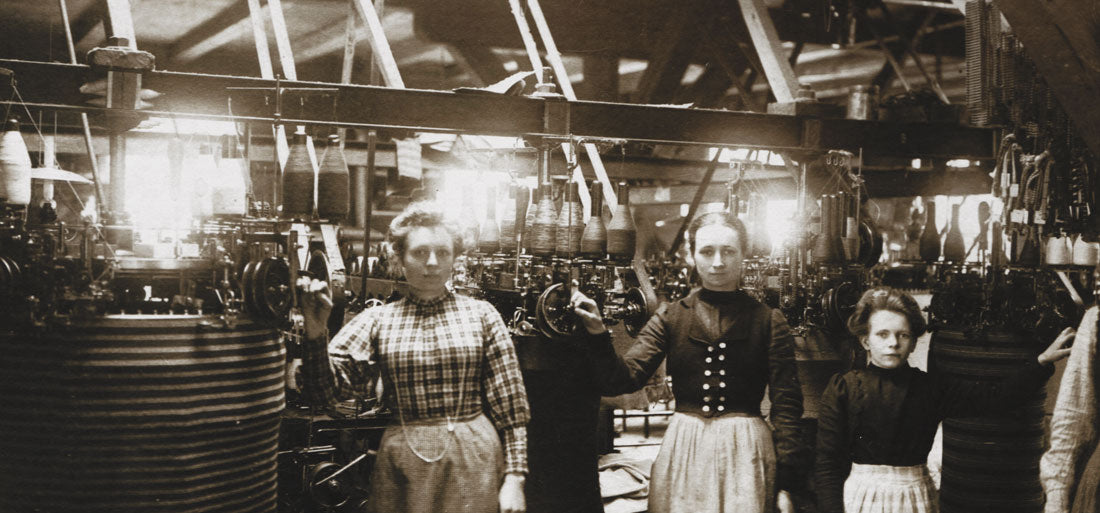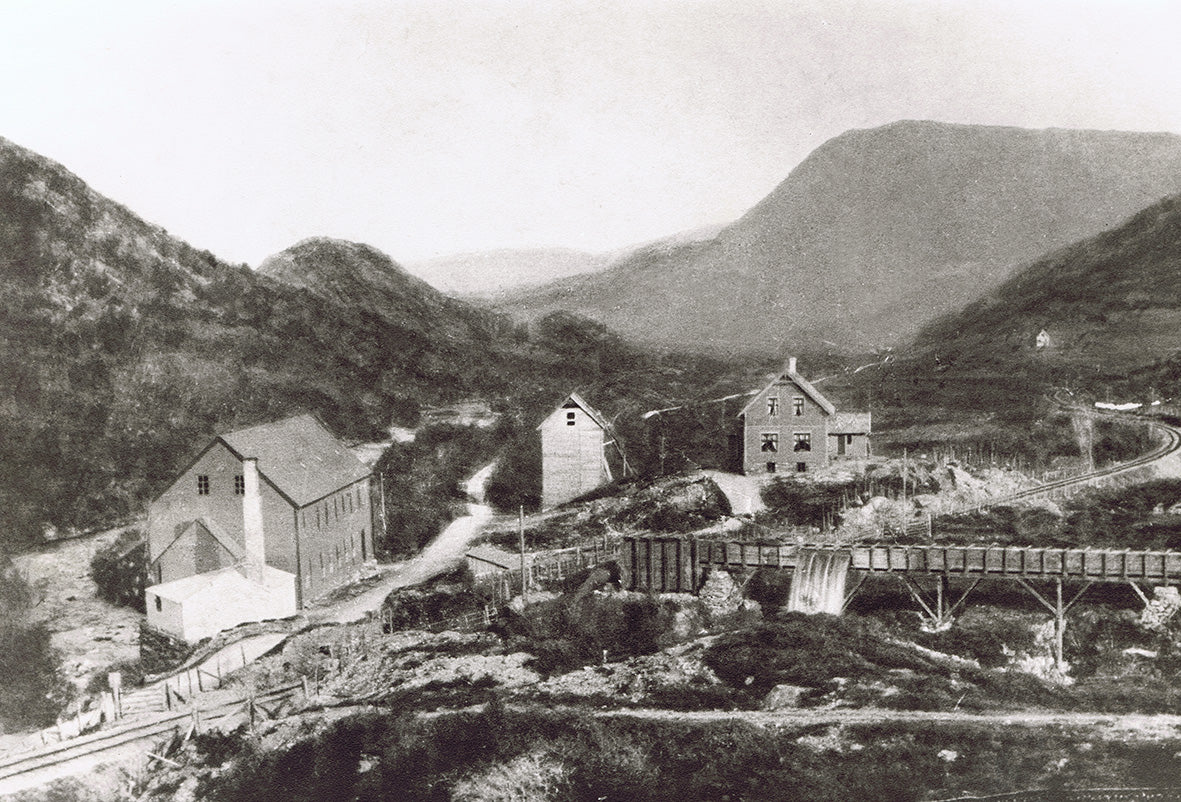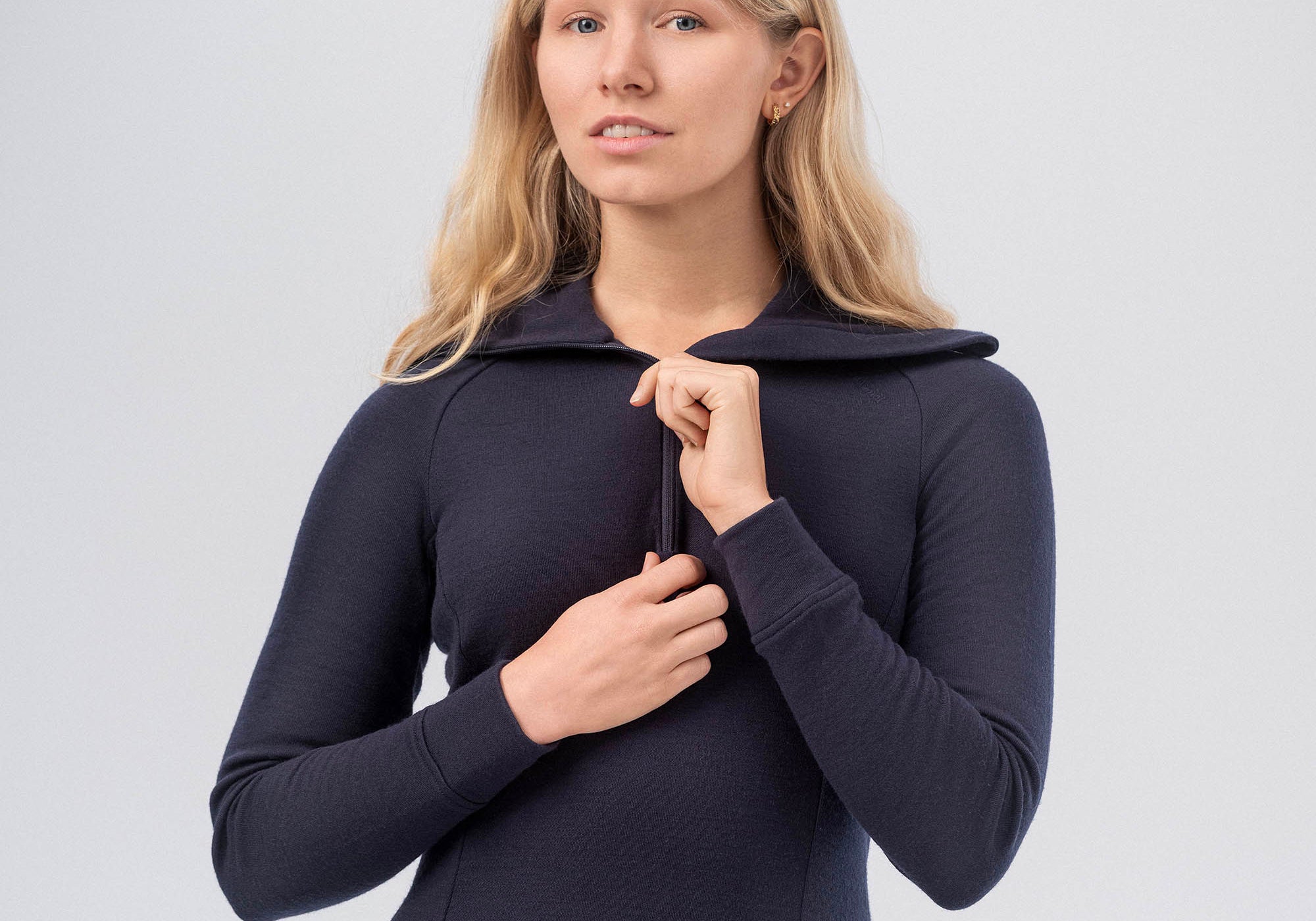It was mainly the access to hydropower that led Anton S. Stephansen to choose Espeland as the site for his
industrial enterprise.
The factory is built in 1895
The factory building for Espelandsfos Spinning and Knitwear Factory was completed in 1895. Stephansen immediately
began building housing for the workers. From the very beginning, the building was called “The Residence” by the
employees.

The workers also needed both food and other goods. In the beginning, this need was met by one of the employees
starting a small shop in one of the living rooms in “The Residence”. But already from 1896, the customer base had
expanded enough that a shop was established on the ground floor of its own building.
This was the beginning of
the local community that would grow up at Espeland.
Sales and Recognition
During 1897, sales began to take off both in Norway and Sweden. That same year, there was a large textile exhibition
in Stockholm, where Stephansen participated with his products and was awarded a bronze medal for them.
In the
summer of 1898, the great Bergen exhibition was held. Even with strong competition from older and more established
knitwear factories, Stephansen once again won a bronze medal. In this way, the products became better known while
the customer base continued to grow.
The Train Station at Espeland
Anton S. Stephansen now truly felt that the factory’s location was a disadvantage. The only time the train stopped at
Espeland was when the factory received new supplies of coal.
Stephansen entered into negotiations with the
Railway Board, which did not want to spend money on building a siding and paying a station master. The railway
connection was so important that Stephansen eventually undertook to lay the siding, build a packing shed, and employ
an agent at his own expense. On these terms, in 1899, he was granted that the Garnes train would stop morning and
evening at Espeland.
This development was not only significant for the factory. Farmers and other locals were
also pleased that the place was now more closely connected to surrounding areas, and not least to Bergen.

One of the first photos from the knitting department at Espeland
The Entry of Stephansen’s Sons and the Journey of the Wool Sock
From the turn of the century, both of Stephansen’s sons had joined the operation. They contributed not only their labor but also initiative and new ideas. The factory had mainly focused on underwear. The machinery also made it possible to knit wool sweaters.
In 1903, trial production of a completely new product began: the wool sock. Six small flat knitting machines were all that was used to produce the new product. “The wool sock” quickly became a sought-after commodity, and more machines had to be put into use to meet demand. Throughout the 1920s, it turned out that the wool socks not only won the hearts of Norwegians. Swedes, Danes, Icelanders, and Germans also embraced the warm woolen stocking.
There was also a need for greater spinning capacity, and an expansion seemed to be the only sensible solution. In 1905, Stephansen began expanding the factory. An extension towards the river was built. Here, space was made for two spinning frames with carding machines.
The machinery now consisted of: wool sock knitting machines, stocking knitting machines, new modern circular knitting machines, and a dyehouse. The factory at Espeland had grown significantly during the 20 years since its establishment in 1895.




